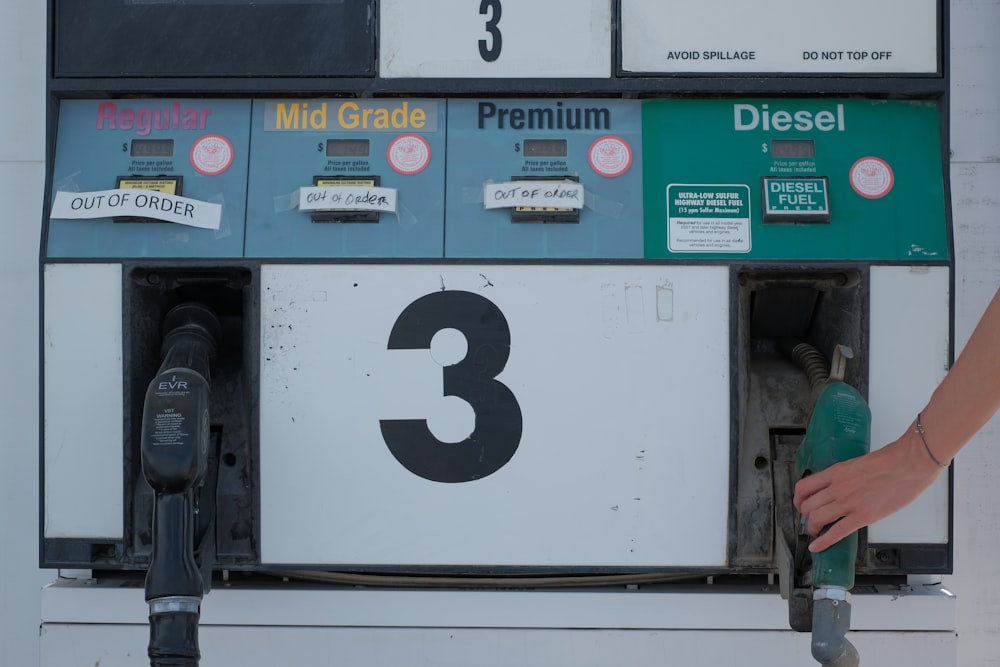How Much Of The Gasoline Price Surge Is President Biden’s Fault?
Image Source: Unsplash
One year ago this week I wrote an article that turned out to be my most popular article ever: Who Is To Blame For Rising Gasoline Prices? The article got more than a million views and spawned a large amount of feedback.
A year later, the same dynamic I wrote about then is still responsible for most — but not all — of the gasoline price increase we have seen over the past 18 months.
The Covid Effect
To recap, just before the Covid-19 pandemic, U.S. oil production hit an all-time high of about 13 million barrels per day (BPD). As the pandemic unfolded, demand for oil collapsed, and production followed. By May 2020, oil production had dropped by more than 3 million BPD to 9.7 million BPD.
When the pandemic crushed oil demand in 2020, some oil companies went out of business. Some small stripper wells — which account for a respectable amount of U.S. oil production — were permanently capped because of the bleak outlook. Some workers left the oil industry. As people went back to work, demand began to bounce back, but production lagged due to the aforementioned issues.
Following the production collapse of 2020, the U.S. has been playing catch up as demand recovered. Rising oil prices — in response to insufficient supplies — are the predominant reason for the surge in gasoline prices.
In the last three months of the Trump Administration, oil prices rose by 32% as demand bounced back. From a monthly average of $39.40/bbl in October 2020 (source), the price of West Texas Intermediate (WTI) averaged $52.00/bbl in January 2021 — Trump’s last month in office.
In the first three months of the Biden Administration, the average monthly price of WTI rose by another 19% to $61.72/bbl. In the three months after that, prices rose another 17% to $72.49/bbl. Prices then bounced between $70/bbl and $80/bbl until January 2022. More on that below.
Many people attributed the entire price rise to President Biden, but in reality it began before Biden took office. Further, it was neither primarily President Trump nor President Biden’s fault — and these price surges were taking place all over the world.
To be clear, the stimulus money that both presidents approved had some impact. When people have more money, they spend it. Demand for goods rises, driving inflation. Stimulus money played a minor part in the gasoline price rise, but it was primarily a function of the oil price surge due to the imbalance brought on in the aftermath of the Covid-19 demand plunge.
The most recent data available from the Energy Information Administration (EIA) shows current U.S. oil production at ~11.6 million BPD, which is still 1.4 million BPD short of pre-pandemic production. Supply is going to lag demand for a bit longer, and that’s going to keep upward pressure on gasoline prices.
The Putin Effect
But now let’s discuss something that President Biden did impact. I often point out that a President has few handles for impacting gasoline prices in the short term. Those handles are primarily 1). Releases of oil from the Strategic Petroleum Reserve; 2). Changing the gasoline tax; or 3). Involvement in a war with a major oil producer. All of these things can have a rapid impact on gasoline prices.
When it looked like Russia was massing troops on Ukraine’s border, oil prices broke out above the 2021 range. In January 2022, the average price of WTI moved up to $83.22/bbl. In February, when Russia actually invaded Ukraine, the average price jumped to $91.64/bbl. I attribute this price rise primarily to Vladimir Putin, combined with the world’s response to the invasion.
However, there is one action that President Biden does bear responsibility for. Biden’s decision to stop importing Russian oil was the trigger for oil prices surging above $120/bbl. They have retreated from that level for now, but the inefficiencies involved in rerouting Russian imports and backfilling that oil will keep a premium on prices.
I am not making any judgments here on whether it was the right or wrong decision. And I agree that Biden made the decision in response to Russia’s actions against Ukraine.
You may believe that banning Russian oil was the right move, but it does impact gasoline prices. It is arguably the first decision President Biden has made that had an immediate, short-term impact.
I say “arguably” because Biden has authorized some releases of oil from the Strategic Petroleum Reserve, and they may have had an impact. However, if they did it was fleeting, and only provided a small, temporary supply bump in a market that is significantly undersupplied.
Many people believe that the cancellation of the Keystone XL pipeline by President Biden has impacted gasoline prices. But that’s a potential long-term impact. The Keystone XL decision doesn’t impact prices today, but its absence may very well result in higher prices in the future. Biden’s decision to ban Russian oil, on the other hand, has an immediate impact on prices.





I agree with most of what you said, but do have to side with Alpha Stockman and Angry Old Lady.
The Keystone Pipeline was never going to affect the price of US oil - it was never even meant for domestic use. It was to pipe Canada's oil THROUGH the US, to be exported to other countries through the Gulf.
How can iden's banning Russian oil be the cause of the price of oil surging? The US only gets 3% of its oil from Russia! And even if true, wouldn't that simply mean the price increase was Putin's fault for commiting invading Ukraine without cause? Or do you think we should just continue to support Russia in its war crimes and buy its oil?